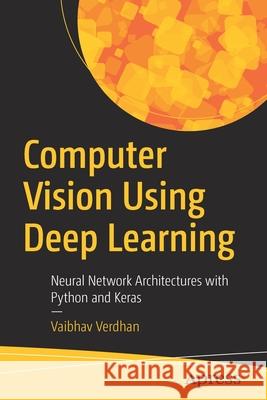Computer Vision Using Deep Learning: Neural Network Architectures with Python and Keras » książka
topmenu
Computer Vision Using Deep Learning: Neural Network Architectures with Python and Keras
ISBN-13: 9781484266151 / Angielski / Miękka / 2021 / 308 str.
Computer Vision Using Deep Learning: Neural Network Architectures with Python and Keras
ISBN-13: 9781484266151 / Angielski / Miękka / 2021 / 308 str.
cena 210,17
(netto: 200,16 VAT: 5%)
Najniższa cena z 30 dni: 210,17
(netto: 200,16 VAT: 5%)
Najniższa cena z 30 dni: 210,17
Termin realizacji zamówienia:
ok. 16-18 dni roboczych
Bez gwarancji dostawy przed świętami
ok. 16-18 dni roboczych
Bez gwarancji dostawy przed świętami
Darmowa dostawa!
Kategorie:
Kategorie BISAC:
Wydawca:
Apress
Język:
Angielski
ISBN-13:
9781484266151
Rok wydania:
2021
Ilość stron:
308
Waga:
0.46 kg
Wymiary:
23.39 x 15.6 x 1.75
Oprawa:
Miękka
Wolumenów:
01
Dodatkowe informacje:
Wydanie ilustrowane











